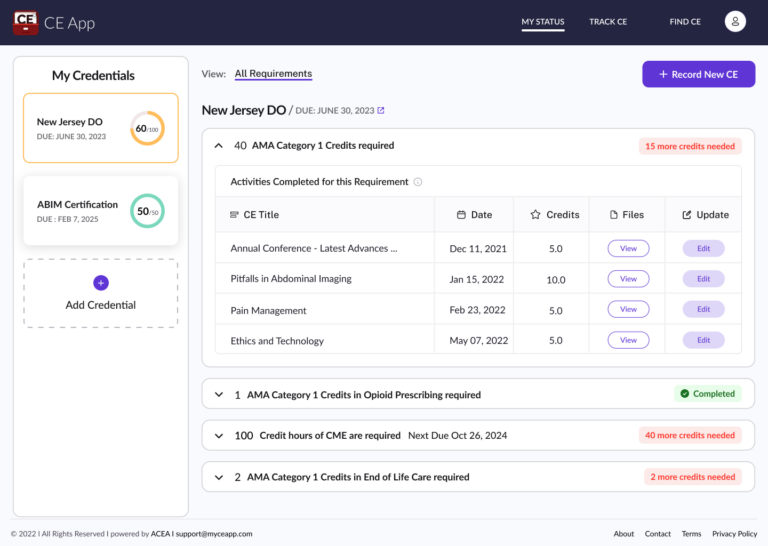Creating Transparency in Certification Programs: Actionable Insights and Examples
As a certification program manager, one of your top priorities is to establish transparency within your certification program. Transparency builds trust, enhances the credibility of your certifications, and fosters positive relationships with certification holders and applicants. In this article, we will provide you with actionable insights and real-life examples to guide you in creating more transparency in your certification program.
The Importance of Transparency in Certification Programs
Transparency is crucial for certification programs as it allows stakeholders to understand and trust the certification process. By providing clear and concise information, you empower certification holders and applicants with the knowledge they need to navigate through the program effectively. Here are some key benefits of creating transparency:
- Enhanced credibility: Transparent certification programs are viewed as trustworthy and credible by industry professionals, employers, and the general public.
- Increased engagement: Transparent communication keeps certification holders and applicants engaged throughout the certification journey, leading to higher completion rates and satisfaction levels.
- Reduced confusion: Clearly documented process steps, milestones, and status updates help eliminate confusion and provide a sense of clarity for all stakeholders involved.
- Improved decision-making: Transparency enables certification program managers to make data-driven decisions by analyzing program metrics and identifying areas for improvement.
- Positive user experience: When certification holders and applicants have access to transparent information, they feel supported and valued, resulting in a positive user experience.
Actionable Insights for Creating Transparency
Now, let’s delve into actionable insights and examples that will help you establish transparency within your certification program:
1. Clear Documentation of Process Steps
Provide a detailed overview of the certification process, outlining each step from application to completion. Break down complex procedures into easily understandable sections, and consider using visual aids such as flowcharts or infographics to enhance clarity.
Example: A well-known certification program in the industry provides a comprehensive guidebook that explains the process steps in a user-friendly manner. The guidebook includes detailed descriptions, timelines, and examples to help certification candidates understand what is expected at each stage.
2. Milestone Tracking for Certification Holders
Implement a system that allows certification holders to track their progress and milestones within the program. This could be a personalized online portal where they can view completed requirements, upcoming deadlines, and their overall certification status.
Example: Many certification programs provide a dedicated online platform where certification holders can log in and access their personalized dashboard. The dashboard displays their progress, including completed requirements, pending tasks, and upcoming milestones. This feature allows certification holders to monitor their journey and stay motivated.

Showing a status breakdown on continuing education for your custom certification requirements (and other licensure) is easy with the CE App.
Learn more about continuing education management software (CEMS) for associations.
3. Status Updates for Certification Applicants
Keep certification applicants informed about the status of their application throughout the evaluation process. Regularly communicate with them via email or a dedicated portal to provide updates, estimated timelines, and any additional requirements needed for successful completion.
Example: Certification programs often send automated email notifications to applicants, keeping them informed about the progress of their application. These emails include details on the current stage of evaluation, expected timelines for the next steps, and contact information for any inquiries or concerns.
4. Transparent Communication Channels
Establish accessible communication channels to address inquiries, concerns, and feedback from certification holders and applicants. Provide multiple options, such as email, phone, and a dedicated online help desk, to ensure seamless communication and support for certification holders and applicants. This allows them to reach out with questions, provide feedback, and receive timely responses from the certification program team.
5. Comprehensive FAQ Section
Create a comprehensive Frequently Asked Questions (FAQ) section on your certification program’s website. Anticipate common inquiries and provide clear and concise answers to address them. This resource will empower certification holders and applicants to find information quickly and independently.
Example: The certification program’s website includes an extensive FAQ section covering various topics such as application process, eligibility criteria, exam format, recertification requirements, and more. It addresses common concerns and provides relevant information to ensure transparency and ease of understanding for all stakeholders.
6. Regular Updates and Announcements
Communicate important updates and announcements to certification holders and applicants on a regular basis. This can be done through newsletters, blog posts, or email notifications to keep them informed about changes, upcoming events, and opportunities related to the certification program.
Example: The certification program sends monthly newsletters to all stakeholders, providing updates on program enhancements, industry trends, success stories of certified professionals, and upcoming professional development opportunities. These regular communications foster transparency and keep the community engaged and informed.
7. Publicly Available Policies and Procedures
Make your certification program’s policies and procedures readily accessible to the public. Publish them on your website or in a downloadable document format. These documents should outline the program’s rules, guidelines, and ethical standards, creating transparency and demonstrating your commitment to fair and consistent certification processes.
Example: The certification program maintains a dedicated section on its website where visitors can access and download the program’s policies and procedures. These documents cover important aspects such as exam administration, certification renewal, code of conduct, and appeals process.
Conclusion
Creating transparency in your certification program is essential for building trust, credibility, and engagement among certification holders and applicants. By implementing actionable insights such as clear documentation, milestone tracking, status updates, transparent communication channels, comprehensive FAQs, regular updates, and publicly available policies, you can establish a culture of transparency and enhance the overall experience of your certification program.
Remember, transparency is an ongoing effort, so continuously evaluate and refine your practices to ensure that certification holders and applicants have the information and support they need to succeed. By prioritizing transparency, you will foster a stronger and more respected certification program within your industry.


